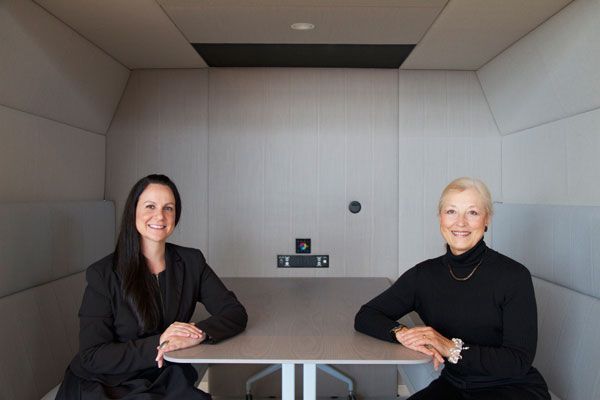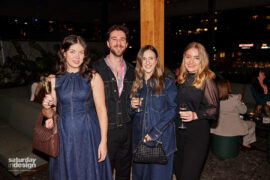Two workspace psychology experts are challenging Australian companies to invest in their employees and their workspaces in a new book: The Power of Workspace for People and Business.

April 22nd, 2015
Recently published by Schiavello and co-authored by Keti Malkoski and Dr. Jacqueline Vischer, who have backgrounds in applied psychology, The Power of Workspace for People and Business emphasises the importance of incorporating employees’ experience into workplace design. This new approach empowers employees to co-create their workspaces may offer the key to increasing job satisfaction, effectiveness and productivity across multiple industries.
We recently spoke to the authors about the book and workspace efficiency.
IDL: What makes The Power of Workspace for People and Business special? What drew you to the topic initially?
The success of workspace change is highly dependent on the people and culture. Jacqueline and I both have backgrounds in applied psychology and The Power of Workspace for People and Business applies practical applications to effective workspace strategy.
The book describes a new workspace change approach called HI-WAVE (How to Invest in Workspace to Add Value). We were initially drawn to the topic through our joint understanding of the way people feel, think and behave at work, and in work environments.
IDL: What did you learn about investing in workspace through your research? What surprised you?
Having operated within the workspace realm for several years, I found that people have emotional reactions to workspace change, both positive and negative. The most basic and least recognised emotion is fear; fear of the unknown, fear of rejection, fear of failure and fear of blame. In The Power of Workspace for People and Business, we aim to provide guidance on how to avoid the adverse effects of fear by empowering employees in the change process.
A structured change management program can ensure that stakeholder emotions are effectively managed and change is viewed positively. We often see emotional reactions to workspace change when the ‘sociospatial contract’ is challenged. A sociospatial contract can be understood as the implicit deal between the employee and employer that gives workspace its symbolic power.
IDL: What workplaces are standouts in the book? What makes them so?
The dynamic of a workspace is directed by its company’s structured change management program. The standout workspaces I have come across are ones that consider the needs of the workforce, as one size does not fit all.
Workspaces that support individual, team performance and effectiveness – now and in the future – are crucial to building a community. Workspaces that also consider the human side of work and recognise that relationships and connections between people are important are the ones that tend to stand out.
We need our workspaces to be flexible and able to adapt to people and business change. Australia Post for example, successfully redesigned its Sydney headquarters to better reflect their business model, which is all about connecting people and supporting their communication needs. Transforming a traditional office building into an open environment with shared spaces for collaboration, meeting and focused work, allowed them tocreate an environment that would facilitate these connections – both within the building and with the surrounding.
IDL: What do you see as the current trends in workplace design that are shaping the business landscape?
The top trends we have identified are:
These days we are more accommodating of diversity and supportive of work/life integration. Workers trust employees and see the value in providing them with choice. Employers are also increasingly beginning to understand that employees have different working needs and we should empower them to work the way that they need to work.
Schiavello
schiavello.com
INDESIGN is on instagram
Follow @indesignlive
A searchable and comprehensive guide for specifying leading products and their suppliers
Keep up to date with the latest and greatest from our industry BFF's!

A curated exhibition in Frederiksstaden captures the spirit of Australian design

Welcomed to the Australian design scene in 2024, Kokuyo is set to redefine collaboration, bringing its unique blend of colour and function to individuals and corporations, designed to be used Any Way!

London-based design duo Raw Edges have joined forces with Established & Sons and Tongue & Groove to introduce Wall to Wall – a hand-stained, “living collection” that transforms parquet flooring into a canvas of colour, pattern, and possibility.

The theme of this year’s London Design Biennale, which runs from 1-27 June, is “resonance” – and it’s all about addressing the world’s biggest challenges through design.
The Good Sheds North project in Melbourne’s docklands has dominated this year’s BPN Sustainability Awards.
Amy McArthur adds another plus to the equation as head interior designer, at Plus Architecture, Melbourne.

High end joinery and a dedication to refined craftsmanship lie at the heart of Boris Tošić’s work. It comes as no surprise, then, that Tošić’s Elan Plus and Skupa ranges, available at Living Edge, exhibit an exemplary display of timberwork and a unique comprehension of furniture design.
The internet never sleeps! Here's the stuff you might have missed

NGV exhibition ‘Making Good: Redesigning the Everyday’ is open – and be prepared to be amazed and delighted by great creative design.

On 6th September 2025, Saturday Indesign went out with a bang at The Albion Rooftop in Melbourne. Sponsored by ABI Interiors, Woodcut and Signorino, the Afterparty was the perfect finale to a day of design, connection and creativity.